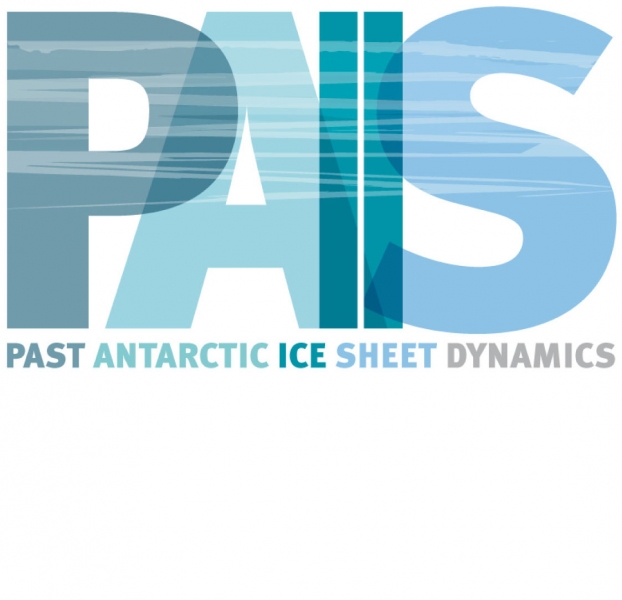PAIS Subcommittee on Paleobathymetry-Paleotopography Workshop (POLAR 2018)

Brief Summary by Stewart Jamieson and Karsten Gohl
Introduction (Stewart Jamieson)
Stewart Jamieson: Stewart summarises the history, motivation and context of this subcommittee with original intention to focus on key intervals 70, 34, 14, 3 Ma. The Wilson et al (2012) Antarctic 34 Ma paleotopographic model paper was a key result with strong impact and consequences for ice sheet and paleoclimate models etc. Uncertainties are very large and must addressed and improved in ongoing and future work.
Short presentations
Katharina Hochmuth: Shows newly developed grids of total sediment thicknesses and 34 Ma paleobathymetry of Southern Ocean between all conjugate margins. Next steps will include grids of several Miocene intervals. Discussion pointed on importance of provenance studies for using paleobathymetry for paleotopography reconstruction of the Antarctic continent. Further disussion (after the workshop) has revolved around how the sediment grids should be used in the 70 Ma timeslice.
German Leitchenkov: Shows sediment thickness maps of various sectors of East Antarctic margin that went into Katharina’s compilation. In the Lambert region, Prydz Bay, the seismic stratigraphy is tied into an ODP core for chronological constraint.
Laura De Santis: Currently, a revision of the Ross Sea sequence stratigraphy is under way using results from recent IODP Expedition 374 and remapping the Ross Sea ANTOSTRAT maps after more recent seismic and drill site data were collected. The work is done in collaboration with Chris Sorlien, Chiara Sauli, Elisabetta Olivo, Sookwan Kim, Roi Granot, Nigel Wardell, Doug Wilson, Phil Bart and Florence Colleoni in the frame of PNRA and MAECI projects.
Guy Paxman: Shows newest results on paleotopographic reconstruction of preglacial and E/O (34 Ma) Wilkes Land Basin by identifying erosional surfaces and offshore sediments. The work in this region, and in previous areas (Recovery and Gamburtsevs) uses a peak accordance method whereby high points in the subglacial topography are covered by a surface that smoothly hits all the high points such that the volume below is the assumed glacial erosion. This volume is compared to offshore sediment volumes and matches within a factor of two which we believe is as close as is plausible at present. He is en-route towards a complete continent-wide paleotopographic reconstruction of 34 Ma and various time intervals to present. Discussion on how to complete the time intervals to present revolved around whether to linearly interpolate through time (with a rate constrained by rates of deposition in the IODP cores in Wilkes Land) or whether to use the D18O record to control the interpolation. The latter approach was considered preferable (following Florence Colleoni) but in discussion Tom Jordan also suggested that the frequency (as opposed to magnitude) of the glacials in the D18O record could be used to interpolate as an alternative strategy. Overall, the best strategy will be to focus on regional settings and including provenance data.
Graeme Eagles: Shows first results on a 70 Ma Southern Ocean paleobathymetry using his own reconstruction method developed from his time at Royal Holloway. Doing this for Antarctic paleotopography is more difficult; it will involve new tectonic model for Antarctic-Australia separation with a continental transform system in East Antarctica. There were advantages to translating movement between Tasmania and Antarctica through part of the Wilkes and into a location nearer the pole because it helps produce a better fit with understanding of movement in the Ross Sea.
Christine Siddoway: Reports on progress of ROSETTA-ICE project with gravity and magnetic data inversion for bathymetry and depth-to-basement below Ross Sea Ice Shelf. Indicating ridge and basin features that connect sub-ice shelf and offshore shelf region.
General Discussion
- Attempts should be made to reconstruct paleotopography of individual ice-sheet catchment areas at various time intervals.
- Suggestion was made to encourage the thermochronology community to get involved in this subcommittee and to form a database for Antarctica to be used in paleotopography reconstructions.
- Provenance experts should be encouraged to get involved in this subcommittee.
- The degree of detail required by the modellers in the palaeotopographies and palaeobathymetries is not known although the small scale roughness/detail does matter. It was resolved that because palaeotopographies tend to produce smoother surfaces, modellers could then add some different scales of roughness to test the models sensitivities to the lack of detail.
- As a final point, Stewart recognised the efforts of the early career scientists in carrying out the reconstructions, particularly Katharina Hochmuth (AWI) and Guy Paxman (Durham).
Attendance:
30 scientists attended, with wide-ranging expertise and interests. Gender balance was 43% female, 57% male. There was en excellent mix of early and ‘later’ career stage attendees.
Outcome of the meeting (commitment to next steps):
The work will continue, with a timeline that should enable presentation of new timeslices by the time of ISAES 2019 in South Korea.
The group proposes to hold a 1 day workshop at ISAES 2019 (taking care not to overlap timing with the proposed PRAMSO workshop). The workshop will aim to begin on the next phase of understanding of palaeotopography and palaeobathymetry, and a regional focus may be appropriate for this. We propose to bring together people with particular expertise in modelling, sediment provenance, thermochronology, seismic stratigraphy and subglacial erosion and geomorphology. Key tasks could be the initiation of circum-antarctic database development in relation to sediment provenance and a database of thermochronology. Additionally, with the presence of modellers, particularly ocean circulation modellers, it is hoped that we can begin a testing phase to understand whether circulation models reproduce the observed sediment piles when using the new 34 Ma palaeotopography and palaeobathymetry. This kind of experiment will act as a quality check for the palaeobathymetric/topographic reconstructions. We anticipate requesting funding to support the travel costs for early career researchers to this workshop and will discuss the level of funds available with the PAIS steering committee.
Karsten Gohl and Stewart Jamieson 20th June 2018, Davos, Switzerland.
All Dates
- 2018-06-19 18:30 - 20:30
